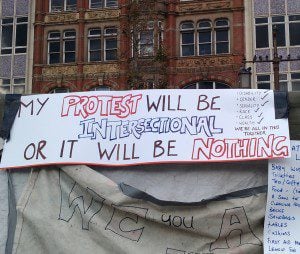It is New Years Eve 2013. I am sitting in a bar drinking arak on the rocks. Alone, mostly. Next to me a table of well heeled, mature, Italians are popping bottles of prosecco and passing around photos of themselves in solemn procession with a huge cross on the Via Dolorosa. Since a priest is doing the honors with a couple of large panettone cakes I think its clear they’ve shifted gears. So in a world of mixed sentiments the festival closest in memory stirs them to sing “Silent Night” in Italian. Really? Okay, now they’ve launched into a sentimental Italian quasi operatic pop song (which is actually all Italian pop.) Before long . . . Sure enough they are gathered around the piano player (who paused in his endless series of old broadway show tunes) and they are singing “Que Sera Sera.”
I need another arak on the rocks.
Did I mention that New Year’s Eve is called “Silvester” in Hebrew – a term picked up from Israel’s long sojourn in German speaking lands and now an unthinking tribute to a notably anti-semitic Christian saint. Fair trade. They got a new holiday named for a Catholic bigot and we got bagles and lox.
Hebrew? Because I’m in Jerusalem and its time to get the party started!
Or not, because its a hair over 24 hours since I arrived with 22 students and we spent 12 hours of that in lectures and touring. The lectures were about God and the Temple in Judaism, punctuated by a visit to the site of former’s home in the latter. The both are hotly contested in contemporary Israeli Judaism, and with only 6 hours of lectures we barely got a dozen of the currently working viewpoints – many contradictory. But let’s make that physical.
All that is left of the second temple is the western, or “wailing” wall. Thank the Romans for that – slightly after the time of Jesus.
Not so many decades ago the Israelis liberated it from its Arab owners. They got it from Turks, who got if from Crusaders, who got it from other Turks, who got if from Greek Christians, who got it from . . . . well Jews but of course they got it from the Jebusites. The propriety in law of the various handoffs is somewhat disputed, but if all parties could rise from the grace and come to the table it would definitely be the source of litigation. War actually.
It is now divided into a women’s and men’s sections. Oh, but that is for Orthodox Jews. How about all those Reformed and Conservative rabbis (especially women) who want fly out from the US to perform a Bar Mitzva for the child of some wealthy member of the synagogue? No way they can do it at the Orthodox wall. So they have a different section of the wall further down to the south.
Our group divides by gender and we head for the respective Orthodox walls, picking up head coverings on the way. A gentle man asks in Hebrew, then English, if we are Jewish. A “no” he greets with a blessing. A “yes” engenders an invitation to step over to a table to borrow the telefine necessary for a man praying properly. Some men step over, a few needing help with the wrapping technique. But we see many men passing up the opportunity.
Then we stand and watch, or join others in placing a written prayer in those holy cracks in the wall. (Does crevice sound better?) Men and boys, most in the costume of Hassidic Jews, stand and pray, bowing in quick jerks toward the wall in the traditional fashion.
It is a gorgeous day – with the wall glowing in afternoon sun and sky that rich azure that comes when it cleansed by rain but still shaded by the shards of the storm. And against that sky above the wall is the temple mount, upon which sits the Al-Aqsa mosque and the Dome of the Rock. There one could also see men in prayer, bowing and prostrating at the place where Muhammad made his mystical ascent.
A sublime thought, but a visit to the top is closed to us because there is even more tension than usual. Three Palestinian freedom fighters/terrorists from this part of Jerusalem have just been released by the Israeli government as part of the peace negotiations. Their friends may be inclined to do a little in-your-face celebrating up above all those praying Jews. And of course there are plenty of Jews ready to do some in-your-face protesting in return. So no one is going up except old men and women, although you can count on gender segregation up on top as well.
I wonder if God might not come right now to join them, but banging his head against that holy wall or those holy paving stones with frustration at what a three ringed circus of divisiveness this place has become. The guests whom God invited to God’s house for a visit have now moved in, tossed God down in the basement (where the Temple Institute firmly believes the Ark of the Covenant still resides), and are now fighting over who gets to pray at the penthouse.
We need another perspective. And the sun isn’t under the yardarm just yet.
So – Our guide tries to explain the difference in Jerusalem between what belongs to Israel, what is controlled by Israel and belongs to others and may or may not be returned, what is controlled by Israel and belongs to others and will probably be returned, what is controlled by Israel and belongs to others and will be returned, and what is owned and controlled by others but that some Israelis want to take. That would be the distinctions in a single neighborhood.
Apparently it gets more complicated if you look across the whole of Israel and the West Bank. Oh yes – of course the Palestinians have their own analysis – as in: What belongs to us (everything) and what Israel took and gets to keep only because Israel has all the power and we have none (most of it) and what we’ll probably end up with (nothing.)
We met the first set of distinctions when we got permission to go up through a police station to a roof overlooking the temple mount. The station itself is in an old Ottoman mosque that is occupied (but not owned) by the Israeli military. And which therefore is physically undisturbed, with the police occupying its ante-chamber and side halls.
Imagine an room 20 x 30 foot room with a high ceiling. At the entrance there is a large octagonal fountain rising from the stone floor, then a raised floor for prayers, then on the wall and facing Mecca the prayer niche. Ornate colored tiles ornament the niche, with verses for the Qur’an carved on the walls. Two flags draped together from the roof indicating the state of Israel (occupy) and the Muslim association that owns the Temple Mount. Of course we couldn’t take pictures inside the mosque/police station, but did get some great shots from the roof under the supervision of a bored soldier in fatigues and sporting an AK47 . Who wouldn’t allow us to look over at the Dome of the Rock because its not his property and not under his supervision.
So now its clear about who owns what.
I fear this is sounding a little cynical – a sensibility that is hard to escape in Jerusalem with jet lag.
We need another perspective. And at eight bucks a pour arak isn’t going to work long term.
So – did you know that there is an Ultra-Orthodox organization in Israel (United Hatzalah of Israel) whose sole job is to provide a rapid medical response to all forms of medical emergencies? In a building not far from our hotel there is a high tech command center where large computer screens note the location of every volunteer or subcenter. Manned by people in interesting Jewish costumes with long beards and ringlets of hair by their ears. If someone calls in, or calls Israel’s emergency ambulance service, the center instantly calls the closest volunteer.
He or she grabs a portable defibrillator, medical kit/backpack, helmut, and possibly a bullet proof vest. Runs down the street or jumps on a motorcycle and in a congested city, or a countryside that has barely passable roads, goes to help a person who is desperately injured or sick in that critical 15 or 20 minutes or more before an ambulance can arrive. Target response time – 4 minutes. Often less. And who do these members of a quintessentially closed society serve? Anyone. Anyone regardless of religion or ethnicity. Or indeed regardless of whether he or she lives in a dangerous neighborhood or has fallen prey to a conflict that involves flying metal and rocks.
So with a full appreciation for the deep sense of sacred place that animates the deepest devotion and motivates the deepest rivalries among Israel’s inhabitants, as well as its neighbors, and draws its pilgrims and repels its critics: The most sacred thing I’ve heard of these two days in Jerusalem is a guy on a motorcycle with long hair and a beard.
Where you see him or one of his brothers or sisters, kneeling over a person in need, there set a stone and remember Jacob’s words, “How awesome is this place! This is none other than the house of God; this is the gate of heaven.”











